BEATROOTS BATERIA
Beatroots is Reading’s community Samba drumming group. It has been running since 1996 and has performed at many major events and festivals including WOMAD, The Thames Festival and the Olympic Rowing during London 2012. New players are always welcome.
Absolute beginners can join the band by taking part in a Samba 101 taster workshop – email to find out more.
Experienced players can join any time. Tuesdays 8 – 9.30pm at The Weller Center.
Weekly sessions are part workshop and part rehearsal depening on the time of year and how busy the band is with gigs and events.
Email beatroots@readipop.co.uk to arrange to join. Pay for Beatroots terms here
How to get to the Weller Centre:
110 Amersham Road, Reading, Reading, RG4 5NA, Bus routes 27/29 stop outside the centre. Parking is available.
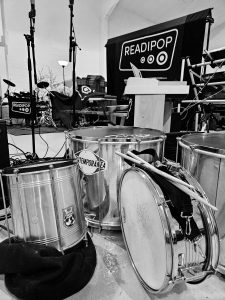
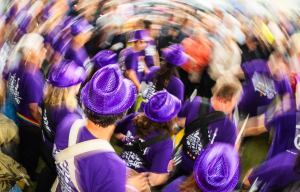
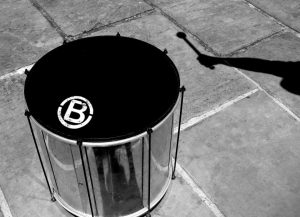
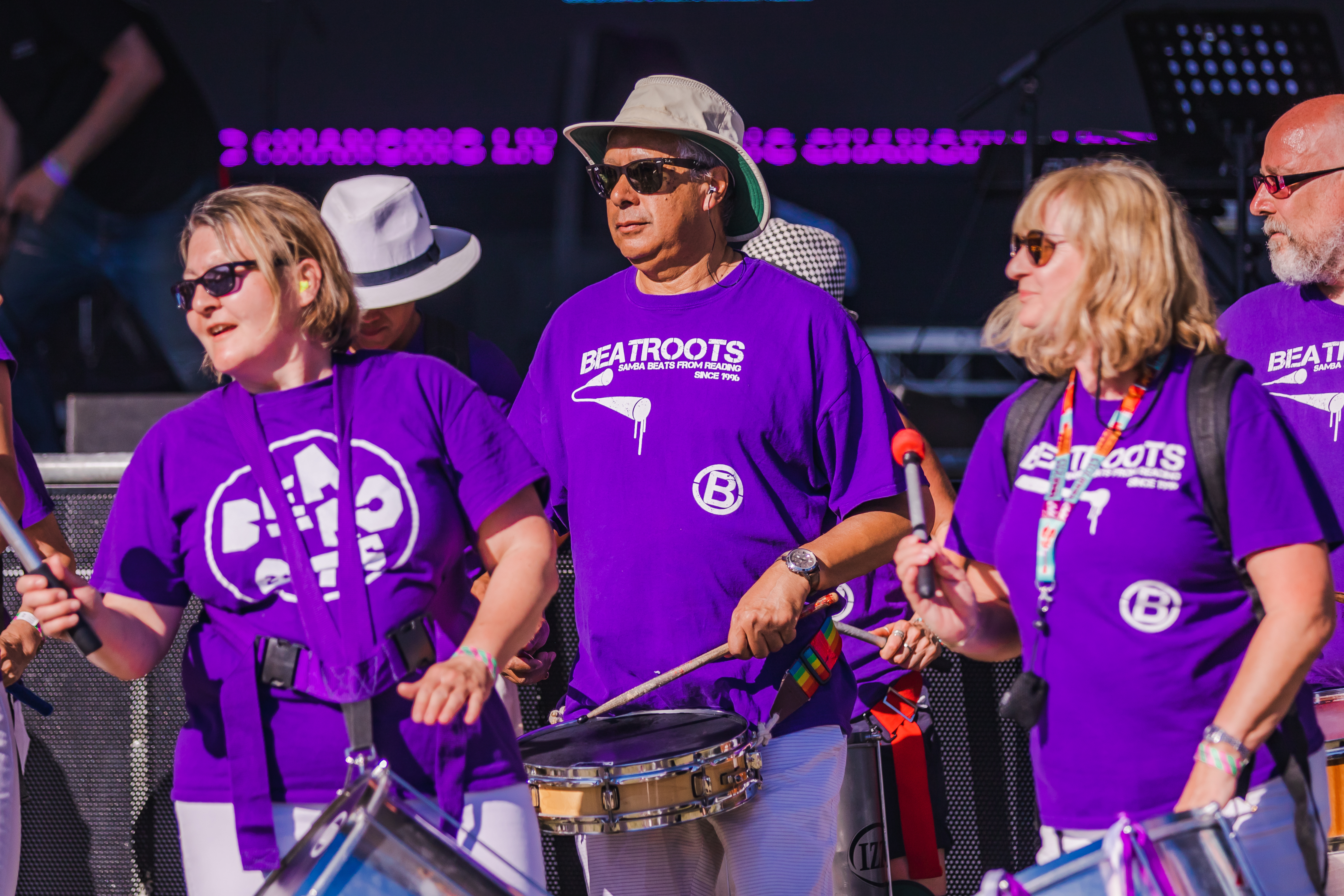
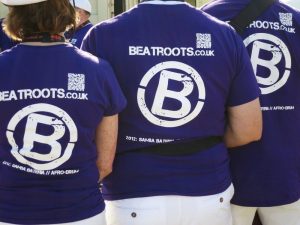
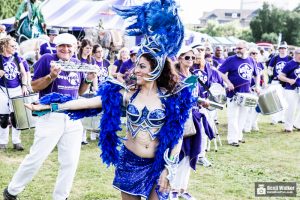
WELCOME TO BEATROOTS
Beatroots Bateria is Reading’s community Samba drumming group. It has been running since 1996 and has performed at many major events and festivals including WOMAD, The Thames Festival, London Millennium, London 2012 and Bargain Hunt! Influenced by the Bahian, Samba Reggae rhythms of Salvador’s Pelourinho, Beatroots is now one of the UK’s longest established community samba drumming groups. This is your chance to have a go and become part of the band.
BEATROOTS is a community-based band and is open to all-comers. People with musical experience (eg drummers or those who have played in orchestras or bands before) may be able to join the band at any time. Those with no prior musical experience can be inducted through a Samba101 session timed to help ease new members in at a couple of key points in the year. You don’t need to attend every session but regular attendance helps to ‘drum in’ the rhythms and breaks and gives time to try out new ideas or to develop more complex arrangements. The fee structure has been revised to reward regular attendance and participation.
Gigs. When we play a gig, you will need to arrange to get your drum to the gig. I usually bring a selection of small items but rely on band members to bring what they need to play. If you cannot take a drum with you for a gig, please find a drum-buddy in the band to help or ask me.
Adopt a drum! Some of our Samba drums are quite big – especially the surdos. As such I cannot bring a full band-worth of kit in my car to the Weller Center. If you choose to play big drum it would be helpful if you could adopt it for the term with the relevant strap. I need to keep hold of beaters to ensure I have enough for every session. Many band members buy their own straps and beaters. Some even buy their own drums. I can recommend the best suppliers.
Hearing protection. Samba is very loud and will damage you hearing after prolonged exposure. I have tried out lots of earplugs and recommend these options. Foam earplugs do provide basic protection but ‘musician earplugs’ will actually help you hear the music better during sessions and gigs.
Beaters: Avoid hard/wooden handled beaters. These are intended for ‘Rio style’ samba drums with hide or plastic heads. These beaters will damage our ‘Bahia style’ drum heads
Drum straps: Find one that provides support and helps you drum hang at the right height for you.
Samba is the popular music of Brazil and there are lots of different styles. The drums usually accompany singers and musicians.
Beatroots plays UK Samba – a style that has grown and developed in the UK over the last 30 years from the early UK based drumming groups such as London School of Samba, The Manchester School and Inner Sense. UK samba focuses on the drums and mixes many influences. Some of the influences have travelled back to Brazil such as the incorporation of ‘drum n bass’ and dub-step rhythms. Our style is influenced by the Bahian styles of ‘swing’ or Samba Reggae and the sounds of Rio ‘Blocos’ like Monobloco or Afro Reggae.
Samba-reggae is a music genre from Bahia, Brazil. Samba reggae, as its name suggests, was originally derived as a blend of Brazilian samba with Jamaican. Samba-reggae arose from the black pride movement in the city of Salvador de Bahia, and it still carries connotations of ethnic identity and pride for Afro-Brazilians today. Bahia’s population has a large proportion of Brazilians who are descendants of African slaves who were brought to Brazil by the Portuguese in the 17th and 18th centuries. These Afro-Brazilians played a major role in the early development of samba, which first took form in a Bahian style of dance and music called “samba de roda”, probably in the late 19th century.
Rio Style – Samba de roda was brought to Rio de Janeiro by Bahians around 1900, where it was combined with harmonic and rhythmic elements from European influences (such as military marches). By the 1930s, samba de roda had developed into the faster, more harmonically complex Rio-style samba that is now played in Rio’s Carnival. Through the middle of the 20th century this new Rio-style samba spread throughout Brazil.
Blocos – Carnival blocks, carnaval blocos or blocos de rua are street bands that mobilize crowds on the streets and are the main popular expression of Brazilian Carnival. Carnaval blocos usually perform samba music all around Brazil, but other popular musical styles are present in specific regions, including frevo and maracatu in Pernambuco and axé in Bahia.
Batucada is a substyle of samba and refers to an African-influenced Brazilian percussive style, usually performed by a drum ensemble, known as a bateria. Batucada is characterized by its repetitive style and fast pace. This is sometimes referred to in the UK as ‘Rio Style’ samba.
Every Samba bateria or bloco is different – each influenced by its leader and the geography of its home, the people who play it, the places it performs and the people who listen and dance.
The wide variety of instruments used in a bateria include:
- Repinique, a high-pitched tom-tom like drum played with a single stick (or two long sticks) and the hand. Traditionally the leader of the ensemble uses the repinique (also referred to as ‘repique’) to direct and solo.
- Surdo, a large drum. It provides the downbeat, the bass downbeat of the rhythm. When only one surdo is playing, it accentuates the 2nd and 4th beat of every measure. When a second surdo is playing, it is tuned slightly higher and is played accentuating the first and third beats of the measure. A third surdo de terceira or Surdo-mor syncopates in between the beats.
- Tamborim, a small drum usually played with a stick or a multi-pronged plastic beater.
- Bells (agogô) – two joined, pitched bells played with a stick
- Chocalho (Ganzá, Rocar, and shakers of various types and materials).
- Caixa de guerra, a deeper snare drum w/ wires on batter head and Tarol, a thinner snare drum.
- Cuica, a single headed drum with a stick mounted inside the drum body, perpendicular to the head. The instrument is played by rubbing a damp cloth along the length of this stick, while pressing the head of the drum with a finger or thumb. The harder to the stick the finger is pressed, the higher the pitch of the sound is produced. The cuica creates a unique sound, which can sometimes sound like a human voice.
- Timbal/timba, a long cone-like drum that is used to produce both high & low tones in the ensemble. It is usually played with hands and creates a similar timbre as the West African Djembé.
- Pandeiro, similar to a tambourine and played sometimes elaborately with the hand. Unlike the tambourine, the pandeiro can be tuned.
- Apito, a small plastic, metal or wooden whistle.
Some terms:
- Maestre – the band leader
- Call – a rhythm (on a drum or whistle) that elicits a response or the start of the rhythm.
- Call and response – the maestre ‘calls’ and the band responds. Sometime the response is the same as the call, sometimes different.
- Break – a change to the rhythm usually called in by a blow of the whistle and a hand signal. The band either returns to the rhythms or changes rhythm.
- Pick-up a quick beat or rhythm that brings the band in.

